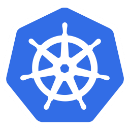Kubernetes: monitoring processes with process-exporter0 (0)
1 November 2025
We are debugging one issue with memory usage in Kubernetes Pods, and decided to look at the memory and number of processes on the nodes. The problem is that a Kubernetes Pod with Livekit usually consumes about 2 gigabytes of memory, but sometimes there are spikes of up to 10-11 gigabytes, which causes the Pod… Read More »
![]()


